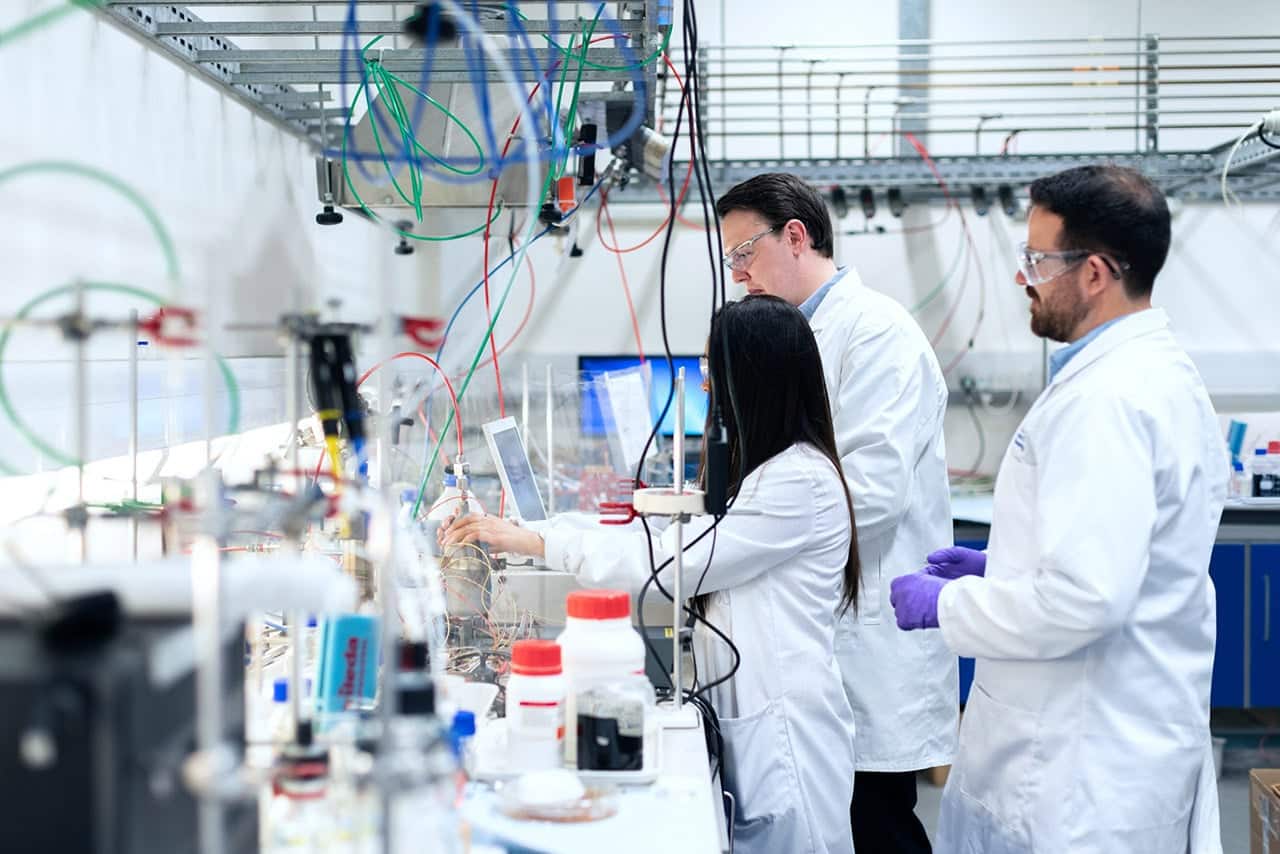Case Study
Metabolomics Provides Insight for Treating Drug-Resistant Relapsed Leukemia
Metabolomics was leveraged to investigate viable therapies for treatment-resistant pediatric acute lymphoblastic leukemia.
Global metabolomics offers a powerful tool to identify the root cause of chemotherapy resistance in acute lymphoblastic leukemia, paving the way for future research to leverage metabolomics for insights into other treatment-resistant cancers.
Global metabolomics offers a powerful tool to identify the root cause of chemotherapy resistance in acute lymphoblastic leukemia, paving the way for future research to leverage metabolomics for insights into other treatment-resistant cancers.

The Challenge: Mechanism of Action for Drug Resistance in Relapsed Leukemia
Chemotherapy, though a viable therapeutic for an array of cancer types and the current gold standard of care in many oncology cases, lacks efficacy for a portion of patients across several types of cancers. For example, pediatric ALL has a survival rate of 80% if diagnosed and treated early.1 However, a percentage of these pediatric patients have cancers that prove to be treatment-resistant, resulting in poor survival outcomes with cure rates at just 40%. Such drug-resistant leukemia poses a problem for the field of oncology, with doctors and researchers working to find not only the root cause of the resistance but also viable treatment options.
Previous research conducted at ICG identified a genetic mutation in chemotherapy-resistant cancer cells. Through genomics, researchers found a mutation in the 5′-nucleotidase, cytosolic II (NT5C2) in 20% of all relapsed ALL patients.2 However, the mechanism by which that mutation caused drug resistance was not defined.
However, data presented in the literature supports NT5C2’s role in promoting the removal of purine nucleotides from cells, ultimately resulting in cytotoxic activity of 6-MP, a chemotherapy drug traditionally employed to treat ALL.3,4 Therefore, mutation in this gene may result in decreased cytotoxicity and reduce the effectiveness of common nucleoside analog chemotherapy treatments.
Metabolomic Insights to Drug Resistance
Metabolomics combined with genomic sequencing has the potential to deliver maximum value for difficult oncology cases with historical drug resistance. To understand the implications of NT5C2 mutation for ALL relapse, researchers worked with Metabolon to perform global metabolomics on a cell model with common mutations to NT5C2. By combining genomic and metabolomic analysis, researchers hoped to pave a path for a more successful therapeutic strategy.
Treatment Solutions from Metabolomics
Although mutations were not detected in samples taken at the time of relapse diagnosis, results from ultra-deep DNA sequencing indicated NT5C2 mutations could be found in complete remission samples before a relapse. Meanwhile, results from metabolomics analysis revealed decreased levels of intracellular purine nucleotides and increased levels of purine metabolites in the culture media of NT5C2 mutant cell populations. Increased extracellular purine metabolites are consistent with NT5C2’s primary activity: promoting export of purine nucleotides.
Researchers therefore hypothesized that the relapse-associated NT5C2 mutations could result in increased purine synthesis, making leukemia cancer cells more sensitive to drugs targeting this pathway. Consequently, treatment with inosine-5′-monophosphate dehydrogenase (IMPDH) increased cytotoxicity against NT5C2-mutant leukemia lymphoblasts in both mutant cell models and a relapse-patient derived xenograft mouse model, overcoming the drug resistance.
Implications and Outcomes for Drug-Resistant Cancers
This publication combined genomic and metabolomic analyses to highlight the relevance of nucleotide export that regulates nucleotide homeostasis. It suggests that cellular sensitivity to IMPDH inhibition may be worth evaluating in new therapies that target recurring acute lymphoblastic leukemia. Future research of other treatment-resistant cancers may benefit from similar metabolomic insights.
Metabolomics offers a viable pathway to identify the root cause of the resistance to traditional chemotherapies for ALL, paving the way for future research to leverage metabolomics for insights into other treatment-resistant cancers.
References
1. Hunger SP, Mullighan CG. Acute Lymphoblastic Leukemia in Children. The New England journal of medicine. 2015; 373:1541–1552. DOI: 10.1056/NEJMra1400972 [PubMed: 26465987]
2. Tzoneva G, Dieck CL, Oshima K, et al. Clonal evolution mechanisms in NT5C2 mutant-relapsed acute lymphoblastic leukaemia. Nature. 2018/01/01 2018;553(7689):511-514. doi:10.1038/nature25186
3. Spychala J, Madrid-Marina V, Fox IH. High Km soluble 5′-nucleotidase from human placenta. Properties and allosteric regulation by IMP and ATP. The Journal of biological chemistry. 1988; 263:18759–18765. [PubMed: 2848805]
4. Brouwer C, et al. Role of 5′-nucleotidase in thiopurine metabolism: enzyme kinetic profile and association with thio-GMP levels in patients with acute lymphoblastic leukemia during 6-mercaptopurine treatment. Clinica chimica acta; international journal of clinical chemistry. 2005; 361:95–103. DOI: 10.1016/j.cccn.2005.05.006 [PubMed: 15990089]






